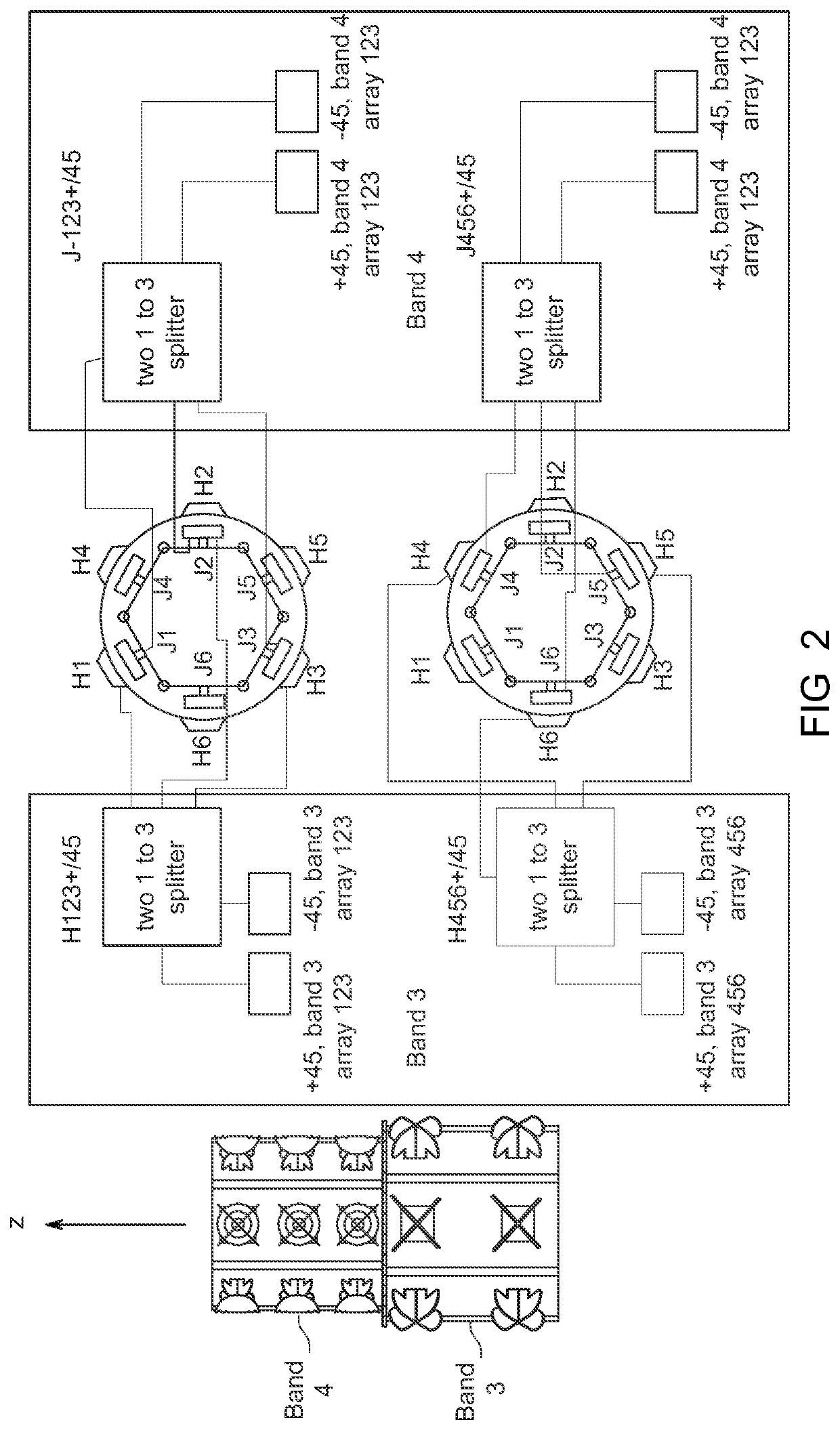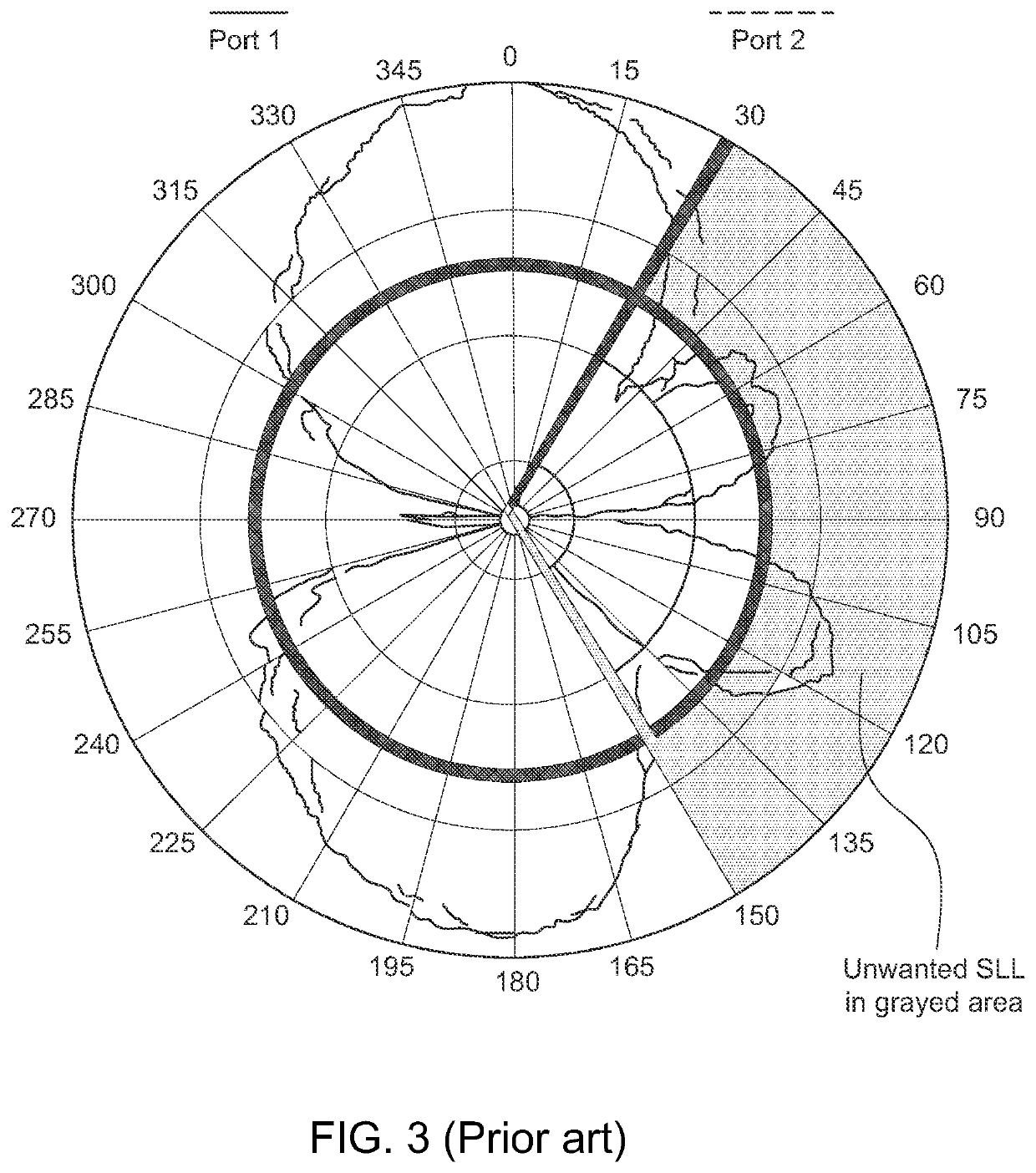Method and apparatus for isolation enhancement and pattern improvement of high frequency sub-arrays in dense multi-band omni directional small cell antennas
- Summary
- Abstract
- Description
- Claims
- Application Information
AI Technical Summary
Benefits of technology
Problems solved by technology
Method used
Image
Examples
Embodiment Construction
[0049]In one embodiment as shown in FIGS. 5A and 5B, an omni-directional small cell base station antenna 10 is shown with a lower structure 12 having spaced apart mid band reflectors 14, each with four mid band (BAND-2) dipole elements 16 forming a mid band (BAND-2) array 18. As shown in Both FIGS. 5A and 5B, antenna 10 also has an upper section 20 that has alternating high band (BAND-3) reflector plates 22 and very high band (BAND-4) reflector plates 24 each with high band (BAND-3) radiating elements 26 and very high band (BAND-4) radiating elements 28 respectively. Plates 22 and elements 26 form a high band (BAND-3) array 30 and plates 24 and elements 28 form a very high band (BAND-4) array 32. FIG. 5B is the close up of upper section 20 shown apart from lower structure 12.
[0050]As shown in FIG. 5B, for the combined high and very high band arrays 30 and 32 on upper portion 20 of antenna 10, reflector plates 22 and 24 are interspersed (every other plate) around the circumference in...
PUM
 Login to view more
Login to view more Abstract
Description
Claims
Application Information
 Login to view more
Login to view more - R&D Engineer
- R&D Manager
- IP Professional
- Industry Leading Data Capabilities
- Powerful AI technology
- Patent DNA Extraction
Browse by: Latest US Patents, China's latest patents, Technical Efficacy Thesaurus, Application Domain, Technology Topic.
© 2024 PatSnap. All rights reserved.Legal|Privacy policy|Modern Slavery Act Transparency Statement|Sitemap



